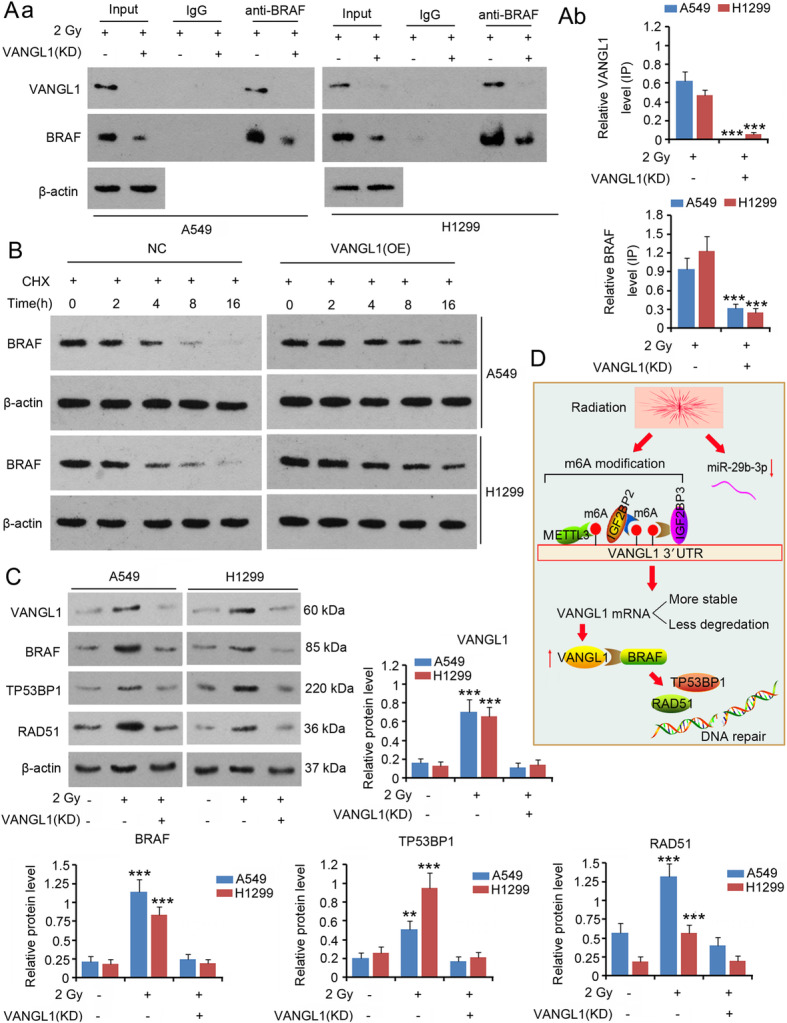Fig. 8.

VANGL1 stimulated a DNA repair signal, BRAF/TP53BP1/RAD51. A549 and H1299 cells with or without VANGL1 knockdown were exposed to 2 Gy irradiation. a IP assay was performed to detect the interaction between VANGL1 and BRAF protein. Aa: western blot charts; Ab: the bar charts of protein levels. ***P < 0.001 vs. 2 Gy group. Unpaired two-tailed t-tests (n = 3). b CHX was added to block BRAF protein synthesis. Western blot assay was performed to detect BRAF protein level during 0 ~ 16 h. c Western blot assay was performed to detect levels of VANGL1, BRAF, TP53BP1 and RAD51 in A549 and H1299 cells. **P < 0.01 and ***P < 0.001 vs. control group. One-way analysis of variance (ANOVA) with post-hoc Dunnett’s testing (n = 3). d shows the molecular mechanism underlying VANGL1-mediated adaptive response of LUAD to irradiation. Briefly, irradiation increased the m6A level of VANGL1. IGF2BP2/3 increased VANGL1 mRNA stability in a m6A-dependent manner. Irradiation-induced deficiency of miR-29b-3p in turn increased VANGL1 expression. VANGL1 further increases the expression of BRAF and the downstream effectors, TP53BP1 and RAD51, through which VANGL1 promotes DNA repair after it is damage upon irradiation
